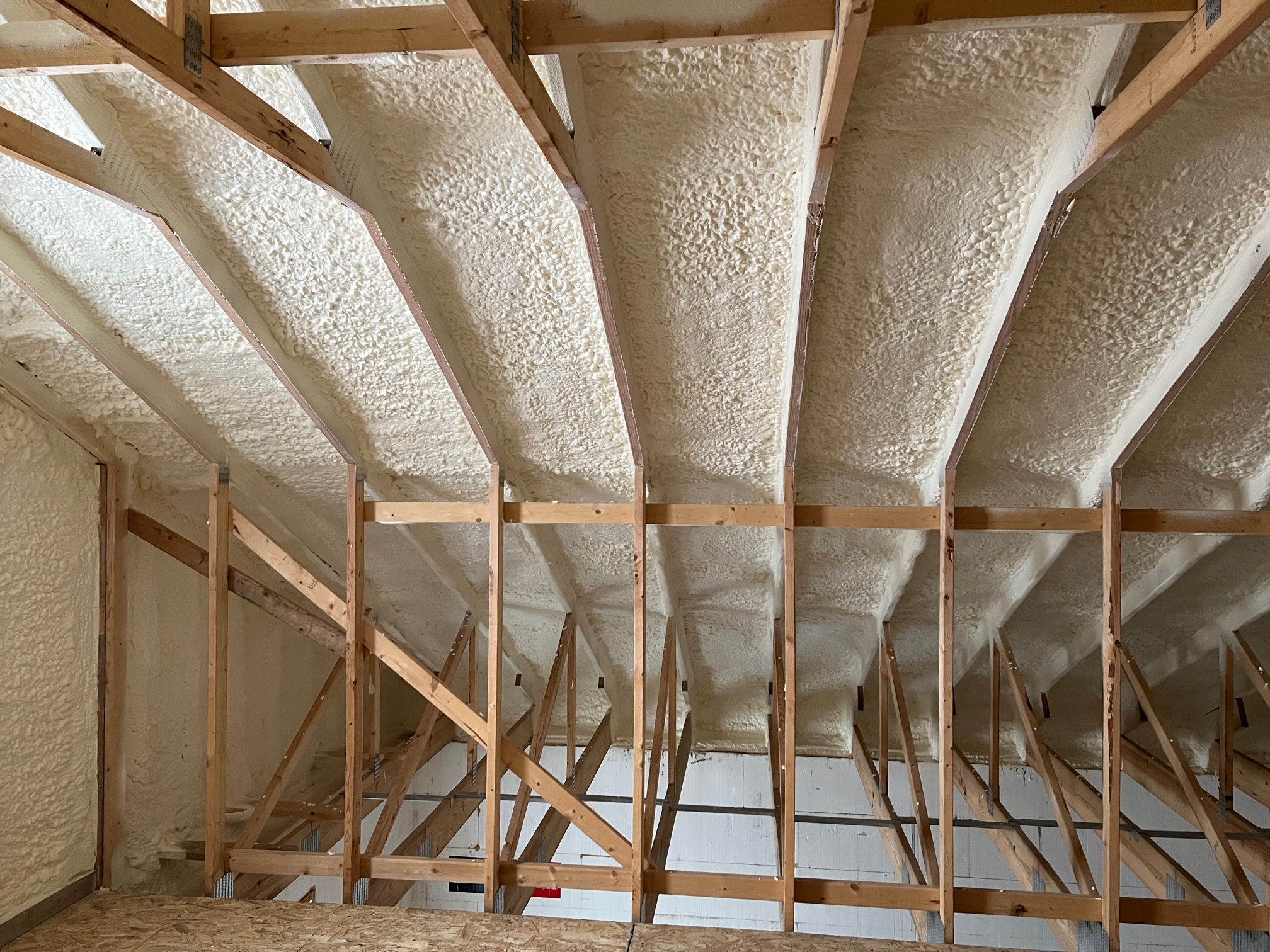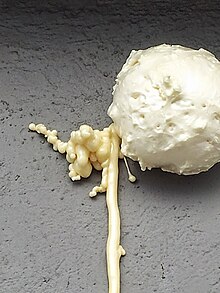Picking the Right Kind Of Spray Foam for Your Insulation Requirements
Picking the Right Kind Of Spray Foam for Your Insulation Requirements
Blog Article
Spray Foam: The Ultimate Option for Air Sealing and Insulation
Spray foam insulation has become a leading solution for efficient air securing and thermal insulation, offering a special combination of residential properties that establish it apart from conventional approaches. Its capability to broaden and load spaces makes it particularly reliable in preventing air leakage, which can dramatically affect power effectiveness. Nonetheless, recognizing the full scope of its advantages, installation processes, and contrasts with other insulation types is important for making educated choices. As we check out these elements, the effects for both brand-new buildings and retrofits come to be increasingly considerable. What variables should affect your selection?
What Is Spray Foam?
Spray foam is a versatile insulation product that incorporates the principles of air sealing and thermal resistance to enhance energy efficiency in structures. Made up mostly of polyurethane or other similar compounds, spray foam is applied as a liquid that expands upon call with surfaces, creating a strong, continual layer of insulation. This distinct residential or commercial property permits it to load voids, cracks, and voids that traditional insulation products may overlook, offering a superior air seal.
There are two primary sorts of spray foam: open-cell and closed-cell. Open-cell spray foam is lighter and more versatile, providing outstanding sound absorption and a lower R-value per inch - Spray Foam. In contrast, closed-cell spray foam is denser, offering a greater R-value, dampness resistance, and added architectural integrity to building parts
The application process usually involves customized equipment, making sure a smooth application that abides by different substratums, including steel, timber, and concrete. This versatility makes spray foam ideal for both new buildings and retrofitting existing structures. Its capacity to create an impermeable obstacle considerably contributes to reducing energy intake and enhancing indoor air quality, consequently making it a preferred option amongst homeowners and contractors alike.
Benefits of Spray Foam Insulation
Among the most significant benefits of spray foam insulation is its phenomenal capacity to develop a continual air obstacle, which successfully decreases power loss. Unlike standard insulation materials, spray foam increases to load gaps and cracks, ensuring that air leak is dramatically minimized. This characteristic not only boosts power performance but likewise results in lower energy expenses with time.
Additionally, spray foam insulation provides remarkable thermal resistance, adding to an extra secure indoor atmosphere. Its high R-value per inch permits reliable insulation in restricted areas, making it ideal for attic rooms, walls, and crawl spaces. Furthermore, the moisture-resistant buildings of spray foam assistance avoid mold and mildew and mold growth, promoting much healthier living problems.
An additional important advantage of spray foam insulation is its sound-dampening qualities (Spray Foam). It effectively reduces sound transmission between areas, creating a quieter and more comfortable home setting. The sturdiness of spray foam also sticks out, as it does not sag or work out over time, keeping its efficiency throughout its life expectancy
Exactly How Spray Foam Works
Comprehending how spray foam insulation works is essential for valuing its efficiency in air securing and thermal resistance. Spray foam insulation includes 2 primary elements: isocyanate and polyol material. When these elements are blended, they go through a chemical reaction that creates the product to expand quickly, producing a dense foam that fills up cavities, spaces, and splits.
As the foam expands, it complies with surface areas, forming an impermeable seal that dramatically lowers air infiltration. This particular makes spray foam insulation very reliable at avoiding drafts and dampness infiltration, which can lead to power loss and damage with time. Additionally, the closed-cell version of spray foam offers remarkable thermal resistance due to its inflexible click for source framework, successfully minimizing warmth transfer.
The unique residential properties of spray foam enable it to adapt irregular surface areas, guaranteeing detailed protection and a seamless obstacle. Therefore, spray foam insulation not just boosts power efficiency however additionally adds to enhanced indoor air high quality by lowering the buildup of allergens and toxins. Inevitably, comprehending the auto mechanics behind Home Page spray foam highlights its role as an exceptional option for insulation and air securing in both business and property applications.
Installment Process Introduction

Before setup, the space has to be appropriately cleansed and prepped, making certain that surfaces are devoid of moisture, particles, and dirt. This action is essential because contaminants can endanger bond and overall efficiency. As soon as the location is prepared, the application entails blending both components of the spray foam, which expands upon call and fills gaps properly.
Trained experts ought to conduct the setup, using specific equipment to make certain consistent insurance coverage and optimal thickness. Safety precautions, consisting of wearing protective gear and guaranteeing appropriate ventilation, are essential throughout this procedure. After application, the foam usually cures promptly, creating a strong barrier that improves energy effectiveness.
Comparing Spray Foam to Standard Insulation
When examining insulation options, spray foam insulation stands out in comparison to conventional materials such as fiberglass and cellulose. Unlike fiberglass and cellulose, which can enable air infiltration, spray foam expands upon application, filling up spaces and crevices to create a closed seal.
Additionally, spray foam provides a higher R-value per inch than typical insulation kinds, using even more effective thermal resistance in a thinner account. This particular is specifically advantageous precede with minimal tooth cavity depth. Furthermore, spray foam is immune to wetness and mold and mildew growth, which can be a substantial concern with cellulose and fiberglass, especially in damp atmospheres.
Nevertheless, spray foam insulation normally brings a greater ahead of time price than its traditional equivalents. Homeowners should consider this initial financial investment versus lasting power financial savings and efficiency advantages. Ultimately, while both insulation types serve their function, spray foam becomes an advanced service for modern insulation requirements, particularly in regards to air securing and thermal performance.

Conclusion
In recap, spray foam insulation represents an extremely effective solution for accomplishing optimum air sealing and thermal resistance. Its distinct buildings, including dampness resistance and noise dampening, make it ideal for numerous applications in both brand-new building and constructions and retrofitting jobs (Spray Foam). The initial prices may be higher compared to traditional insulation materials, the long-term benefits, such as significant power savings and boosted interior air high quality, warrant the investment and emphasize its value in modern structure techniques.
Spray foam insulation has arised as a leading option for reliable air sealing and thermal insulation, providing a special combination of homes that set it apart from traditional approaches.Spray foam is a versatile insulation product that integrates the principles of air sealing and thermal resistance to boost energy performance in structures.When assessing insulation alternatives, spray foam insulation stands out in comparison to traditional materials such as fiberglass and cellulose. Inevitably, while both insulation kinds offer their objective, spray foam arises as a more advanced service for modern-day insulation needs, specifically in terms of air securing and thermal efficiency.
In summary, spray foam insulation represents a highly effective solution for accomplishing optimum great post to read air sealing and thermal resistance.
Report this page